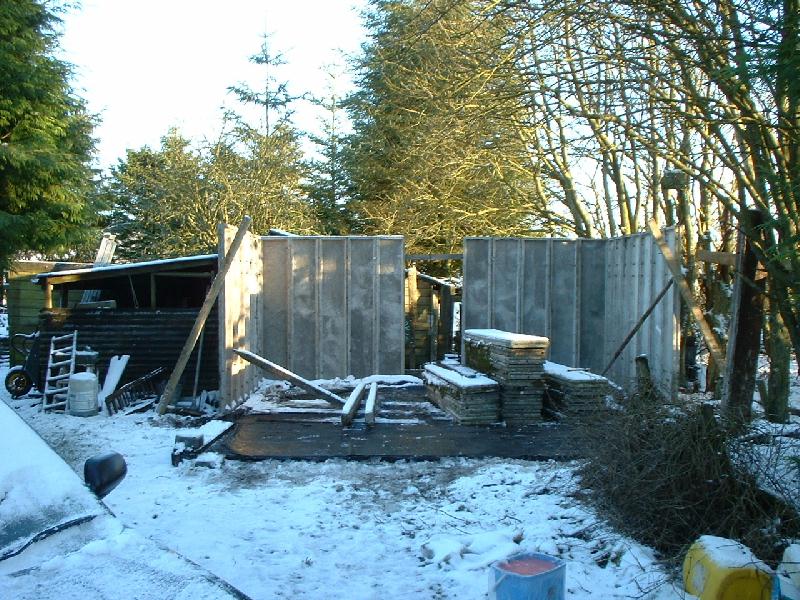Phase 1
Check with the planning dept, (retrospectively if you are into phase 2)
Demolish old wooden garage, clear the site and put down a concrete base. The concrete bits are second hand, luckily I was able to get all 4 specialised corner bits, this made life a lot easier.
Once bolted together, they become fairly stable, more so with short runs and changes of direction and without gaps, The nature of this beast is, however, long straight walls with big gaps. Hence the braces at the forward ends. As you can see, the trees resent the intrusion. Some negotiation is required here, as willow grows until you stop it.
Spring, and the walls are up and the roof is on, the garage immediately starts to fill with things. This demonstrates one of the fundamental truths of the universe ie that an empty garage will fill up. I admit to putting the Landrover in because it has a fabric roof, but the Pugeot hid behind the old freezer while my back was turned, it will have to come out while I do some more work on the gable end and build some doors. Still having trouble with the trees
Here a weatherproof if rather cold garage. The hardstanding to go in front when it gets a bit warmer should make it look a lot tidier. I used polycarbonate on the gable end for a bit of light, since most of the area is floored at the height of the top of the doors. The doors themselves are home made, and fold sideways. The materials came from the same local supplier, they fold like this
It isn't always winter here, but when it is, it lets you know. Here's the view from the bedroom window.
Constructional phase 2. Late Summer.
Question;
How do you make a 5 mtr span roof, with no previous experience.
Answer;
Wing it, but wear a hard hat. Actually I copied the method used by the early Scottish Crofters. but used bolts instead of pegs and square instead of round timbers. 
 It is the happy nature of things that I found in the nearest village a supplier of 6 mtr lengths of timber, sheet ply and the new kind of coated "square section" steel. which is still commonly referred to as wrinkly tin.
It is the happy nature of things that I found in the nearest village a supplier of 6 mtr lengths of timber, sheet ply and the new kind of coated "square section" steel. which is still commonly referred to as wrinkly tin.
